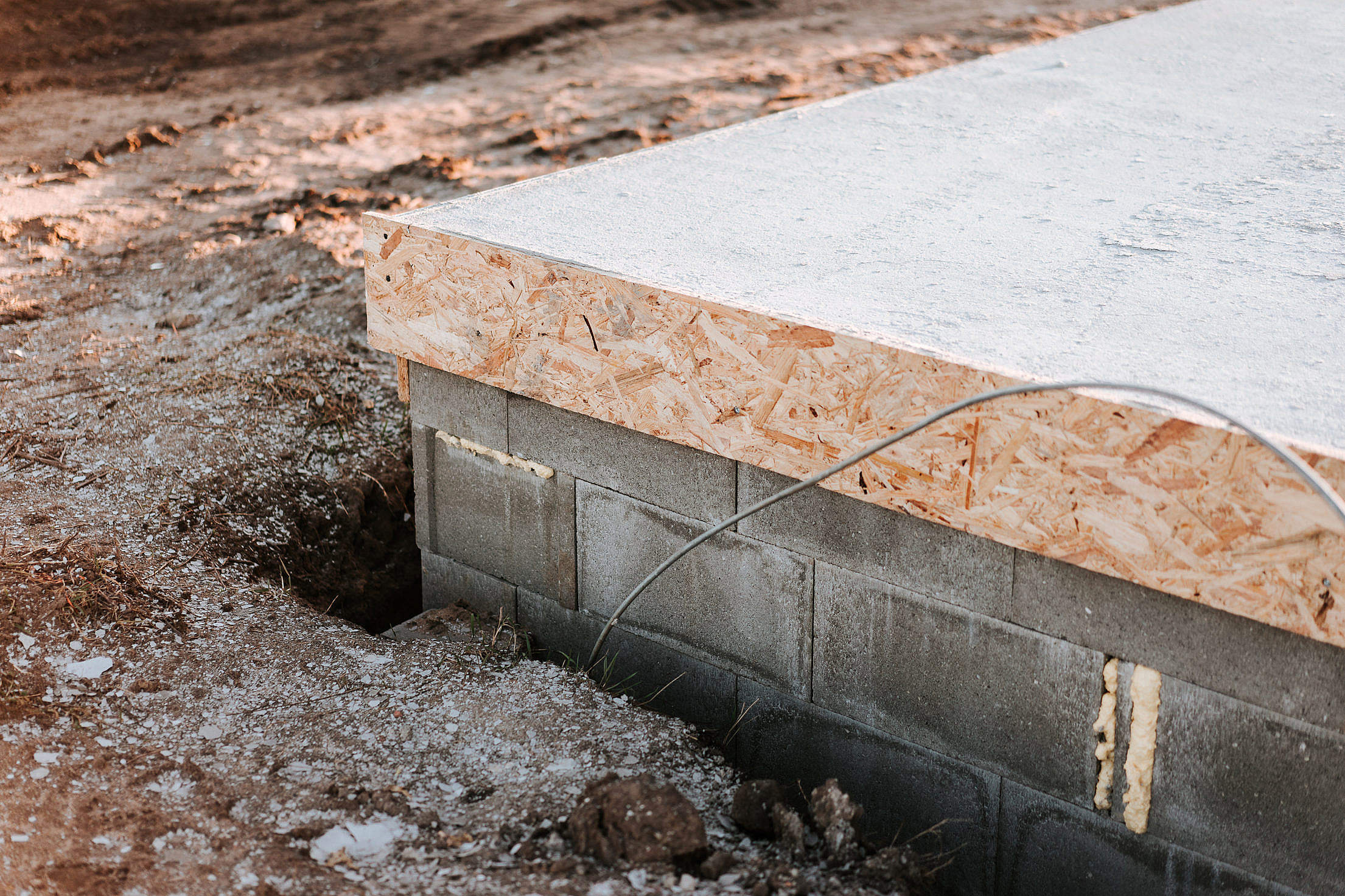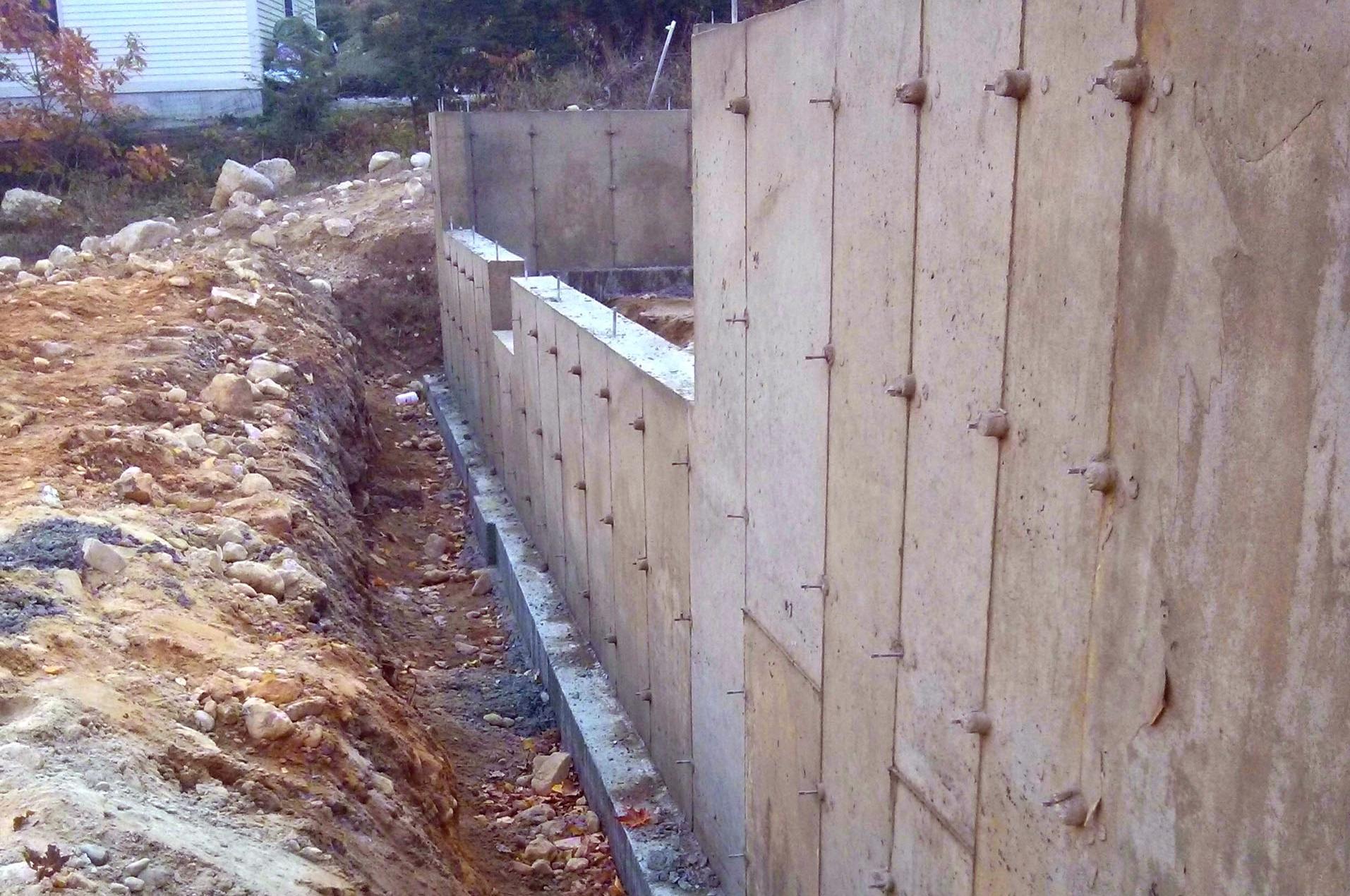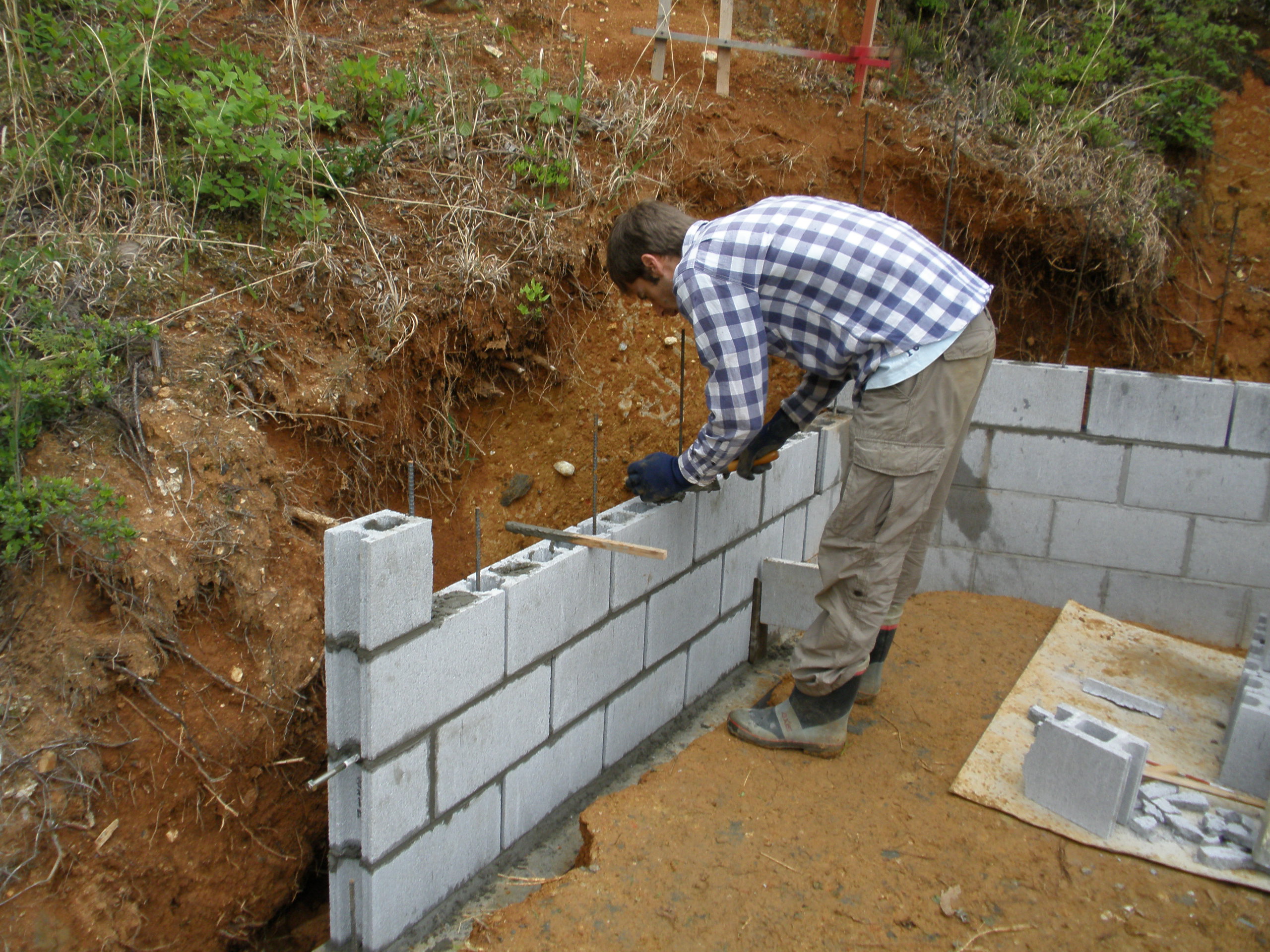Home Building Project Concrete Blocks Completed

3 Types Of Concrete Foundations Engineering Discoveries
Step 1: Planning and Preparation Before undertaking any construction project, thorough planning and preparation are essential. Building a concrete block foundation is no exception. Here are the key steps involved in this crucial phase:

Concrete Block Retaining Walls How to Build A Cinder Block Retaining
4. Stone. Stone basements are no longer common, but you might find them in older houses. These types of house foundations use a mixture of stones and a mixture of cement to form a solid barrier. They can crack and chip, so most builders shy away from such materials in modern homes.

Concrete Masonry Retaining Walls CMU Wall Retaining Wall Companies
Steps To Lay a Foundation Understanding the foundation-laying process is crucial if you're planning to DIY it, and it may also help you understand why we recommend hiring a professional contractor. Below are the basic steps for laying a foundation. Obtain Permits and Materials

Concrete Block Foundation Advantages and Disadvantages of Concrete
Step 1: Mix Mortar The guys used a gas-powered mixer to mix sand, water and type-S masonry cement. Then they would shovel the cement in to large tubs for the block layers. Pro-Tip: Wet the tubs before adding the mortar to help prevent it from drying out. Step 2: Measure Length
Alt. Build Blog Building A Well House 1 Rubble Fill Foundation
Overall, concrete slab house foundation are the most common type. These foundations are made from poured concrete - usually between four and eight inches deep - and reinforced with steel bars called rebar. Basement foundations have subterranean concrete walls that support the above-ground structure.
How to build a concrete block shed foundation Gabret
Reinforcing concrete block foundations with concrete and rebar. Experts can thread steel rebar into existing concrete blocks, and fill the blocks with new concrete for greater strength against water pressure. A block is also typically nailed to the joists to keep the top of the foundation walls from tipping inward. Adding steel columns. Have a.

William N. 24x36 Concrete Block Foundation Site Preparations
What Is a Block Foundation? A block foundation typically rests on a poured concrete footing. The walls are made of offset rows or courses of stacked blocks, so vertical seams do not run straight, but are stepped. Between each block and row, mortar is used to level and bond the blocks together.

Virginia Modular Homes Concrete Block Foundation Get in The Trailer
Step 1: Get the Supplies Here are the tools and supplies needed to build a simple on-grade foundation with solid-concrete blocks: Tools Shovel Garden trowel Pickaxe Measuring tape 4-foot level Mason's string and four wooden stakes Hammer Wheelbarrow Supplies: Straight 8-foot-long 2×4 x Concrete blocks Asphalt shingles Gravel

Concrete SlabOnGrade House Foundations Free Stock Photo picjumbo
Concrete block foundations are strong, capable of handling massive weight, and easier to construct than other foundation types. However, flaws in construction can lead to issues down the line, so we recommend hiring a professional to install a block foundation.

What’s better A poured foundation or block? The SpokesmanReview
What is a concrete block foundation? Concrete block foundations, or Cinder Masonry Units (CMUs), are made from stacked cinder blocks. Using the CMU method, the footings are coated with mortar—a mixture of sand, water, and fillers to bind masonry—then cinder blocks are layered evenly on top. The process is repeated until a foundation wall is formed.
:max_bytes(150000):strip_icc()/concrete-slab-for-a-new-home-175526089-58a5cdbc5f9b58a3c9afa82b.jpg)
House Foundation Types, Uses, and Pros and Cons
Concrete slab or slab-on-grade foundations are solid concrete foundations that rest on the ground and usually have mesh or rebar reinforcement.

Concrete Block JLC Online
7. Insulated Concrete Form (ICF) When it comes to foundation materials, poured concrete is the most common, but home builders may also choose to use insulated concrete forms (ICF) to create the foundation. An ICF foundation is made up of insulated forms that contain poured concrete.

Concrete block wall construction, for retaining wall or extension
The 7 Steps to Prevent, Preserve, and Protect Your Concrete Block Foundation: THE MAGIC WAND FOR YOUR BOND: You need to remove any contaminants on the surface of your concrete blocks. Dust, dirt, and debris will affect the strength of your waterproofing membrane's bond.

How to determine if a poured concrete or block foundation is best for
Concrete, Block, and Slab Foundations Climate, including high water tables, frost lines, harsh winters, and vulnerability to storm surge and high winds, will determine whether a slab or.

A Guide to Concrete Footings Rock Foundations
Concrete masonry is used to construct various foundation wall types, including full basement walls, crawlspace walls, stem walls and piers. Concrete masonry is well suited for below grade applications, because of its strength, durability, economy, and resistance to fire, insects and noise.
Home Building Project Concrete Blocks Completed
Building a cinder block foundation Attention! The walls of the basement should be insulated without fail (even if the building will be erected on dry ground). It is necessary not only to protect the vertical plane of cinder blocks, but also to lay a horizontal layer between the underground and above-ground parts of the building.